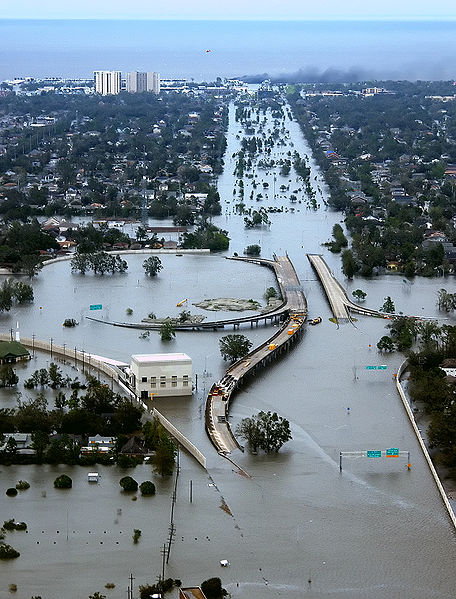Habitat
Aeromonas hydrophila can exist either as as a free-living
aquatic habitant or inside of its host as a parasite to a
variety of vertebrates including humans, fish, frogs, and
crustaceans. Similarly to
Vibrio parahaemolyticus and
Legionella pneumophila,
this organism is found worldwide throughout aquatic
environments including in bottled water, swimming pools,
chlorinated water, well water, and heavily polluted water. A
substantial amount these bacteria were found in the floodwater
following
Hurricane Katrina as well as in Thailand following the
2004 tsunami.
floodwater
following
Hurricane Katrina as well as in Thailand following the
2004 tsunami.
Aeromonas hydrophila has been known to grow either
aerobically or anaerobicly in a wide range of
temperatures, conductivities, pHs, and turbidities, however, its
optimal temperature range is from 25 to 37°C. While it is still
able to survive, it does not thrive under very extreme
conditions such as salinity, temperature, and pollution. Because
oceans have lower salinity concentrations in deeper water, it is
found more prevalently 200m below sea level. As a free-living aquatic organism, it has adapted
mobility by means of a polar flagella and it feeds as a primary
consumer in this particular niche as you can read about in the
nutrition section. Also,
because of its nutritional needs, it often forms a biofilm on
surfaces where nutrients collect. However, since sudden changes in temperature and
water level can negatively affect the immune system of marine
species, the bacteria can more easily attack and grow in the immunosuppressed fish when the environment changes rapidly.
Because of this, it is more prevalent in a host during seasonal
changes. For more on the occurrence and distribution of
Aeromonas hydrophila, read about its impact on
public health.
Not only can this species infect a variety of organisms, but it
also has the potential to infect a variety of systems within
 the
individual host. The pathogen will inhabit different parts of
its host depending on where it has lodged itself. For example,
if a human were to consume food or water contaminated by A. hydrophila, the bacterium would reside and deteriorate the
gastrointestinal tract. If it entered the host via a wound that
has come in contact with contaminated water, the bacteria will
inhabit the soft tissue surrounding the wound. It has also been
reported to infect the eyes, respiratory tract, urinary tract,
and the blood. Furthermore, it is important to note that this
species is not a normal inhabitant of an organism's body.
the
individual host. The pathogen will inhabit different parts of
its host depending on where it has lodged itself. For example,
if a human were to consume food or water contaminated by A. hydrophila, the bacterium would reside and deteriorate the
gastrointestinal tract. If it entered the host via a wound that
has come in contact with contaminated water, the bacteria will
inhabit the soft tissue surrounding the wound. It has also been
reported to infect the eyes, respiratory tract, urinary tract,
and the blood. Furthermore, it is important to note that this
species is not a normal inhabitant of an organism's body.
To understand the nutrition and reproductive strategies that
this species utilizes in these particular habitats, go to the
next page all about food and
sex.
To return to the home page, click
here.